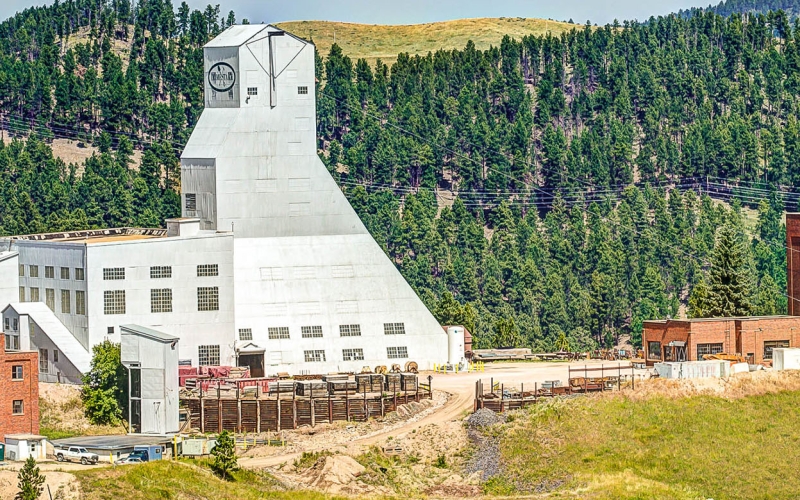Every day, crews of infrastructure technicians convey people and equipment up and down the Yates Shaft. And it is mostly in this context that scientists, lab personnel and visitors see them. What we don't see is the work the crews do to ensure every person - and everything - gets where they need to be, safely.
"During the day, we mostly cater to science," said Pat Urbaniak, team lead. "The night shift is where we do most of the challenging work." That challenging work includes top-down maintenance (TDM), which involves inspecting the shaft, replacing timber, removing debris and installing new ground support.
In 1939, Homestake began "raising" the Yates Shaft, meaning crews mined vertically starting on the 4100 Level, said Jack Stratton, Yates Foreman. Steel was scarce so the shaft was built with fir timber that was blocked to the rock walls using 10- by 20-inch 10-foot long fir blocks. The interior of the shaft was secured using a combination of vertical and horizontal fir slabs, called lacing. It's a solid shaft that has been in use for more than 75 years. However, over time, timber expands and contracts, creating stress on the wood.
Throughout the life of the Yates Shaft, repairs were made as needed. In 2013, Sanford Lab implemented a systematic approach to TDM that focuses on inspecting every piece of timber. A T-1 rating means the wood is in good condition and has a life expectancy of more than five years. A T-2 rating means the timber is in fair condition and has a life expectancy of at least five years. If a piece of timber is rated T-3, it needs attention sooner rather than later.
But TDM involves more than repairing or replacing timber. "We take out the lacing one slab at a time so we can carefully remove any debris behind it," Stratton said. "On average we remove about 25 tons of debris every month. And it's done with shovels, pelican picks and 5-gallon buckets. It's very labor intensive."
TDM began at the 1100 Level. Recently, crews reached a milestone when they completed work on the 3200 Level station. Urbaniak, who worked with Homestake for 10 years and with Sanford Lab for four years, said his main goal is to ensure the safety of his crew. "I don't want anyone to get hurt," he said. "If we have questions about a procedure, we slow down or stop work to re-evaluate things."
Urbaniak also wants to make sure science personnel have continued access to their experiments. "We really enjoy working with science," he said. "They come in with these great ideas and seem excited to tell us what's happening. We don't always understand what they do, and they don't always understand what we do. But we know their work is important and we make sure they can do their work safely. As long as they're happy, we're happy."
